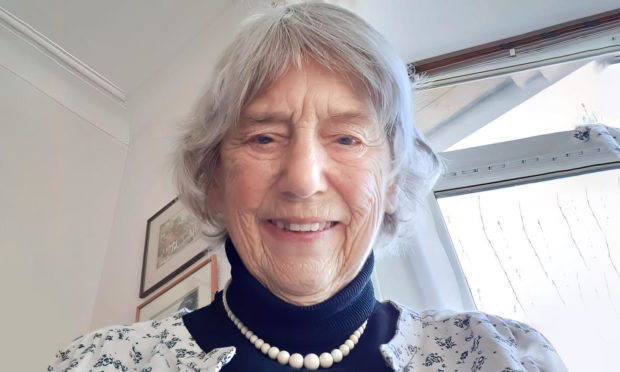Diana Neil, who bought a small corner of Fife and opened it to let others enjoy the benefits of nature, has died aged 89.
In 1989, after living in cities most of her life, Diana and her friend Dr Di Bates pooled their resources to buy the 23-acre small holding at Craigencalt, near Kinghorn Loch.
They planted hundreds of trees to turn part of the holding into a woodland walk and created a bird hide at the head of the loch.
Diana and Di’s motivation was the belief in the healing and wellbeing properties of nature.
In time, Diana become one of the founders of Craigencalt Rural Community Trust, which continues her work today.
Diana Neil was born in Reading. Her mother was a fine art painter and her father, a First World War veteran, went on to become a hotelier and baker.
The family moved around southern England and Diana, her sister and mother, spent the first part of the Second World War in Canada.
After the war, she trained as an occupational therapist in London before returning to Ontario where she met her future husband Eric.
He was a secondary school geography teacher and the couple married in Ontario in 1957 and went on to have five children in Canada.
The couple began to take an interest in the teaching philosophy of Rudolf Steiner and, in 1967, they moved to the UK where Mr Neil began training at the Rudolf Steiner college in Sussex.
In 1970 he took up a post at Edinburgh Steiner School where he remained until the mid 1980s.
Diana worked as an occupational therapist in the city. The couple later split and Mr Neil moved to Fife to take over the running of Glenrothes city farm.
Her son Richard said his mother and Di had hoped to buy a couple of farm cottages and retire to Fife but, by pooling their resources, they were able to buy Craigencalt in 1989.
“My mother felt blessed to have the opportunity to buy Craigencalt with her friend Dr Di Bates, having come from a modest background largely in rural areas but having then lived mostly in cities, mainly Edinburgh.
“It was, therefore, always important to her to share that blessing with others.”
Over the years many local people have enjoyed visits to Craigencalt and guests from around the world have worked as volunteers there.
“After a relatively mobile life it became the place she was to live in longest and one she genuinely cherished.
“Criagencalt was not just as a place to live but it was part of the community it belonged to and to which she contributed.
“My mother supported the boat clubs, the RNLI and others and not least the Craigencalt Rural Community Trust of which she was a founding trustee.”
Richard remains a trustee of Craigencalt Rural Community Trust.
